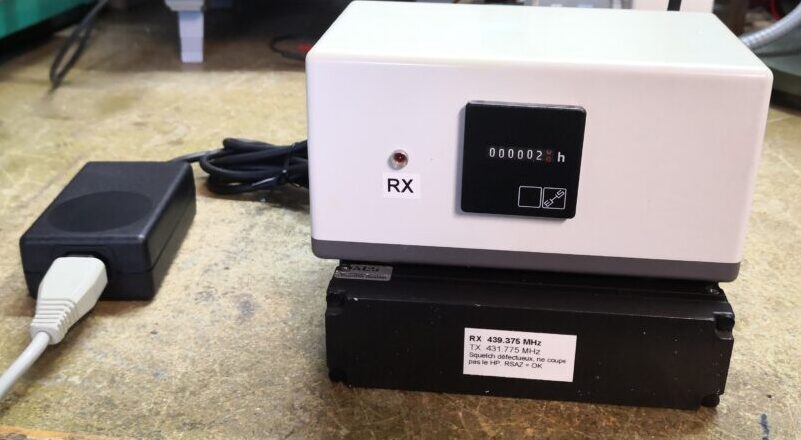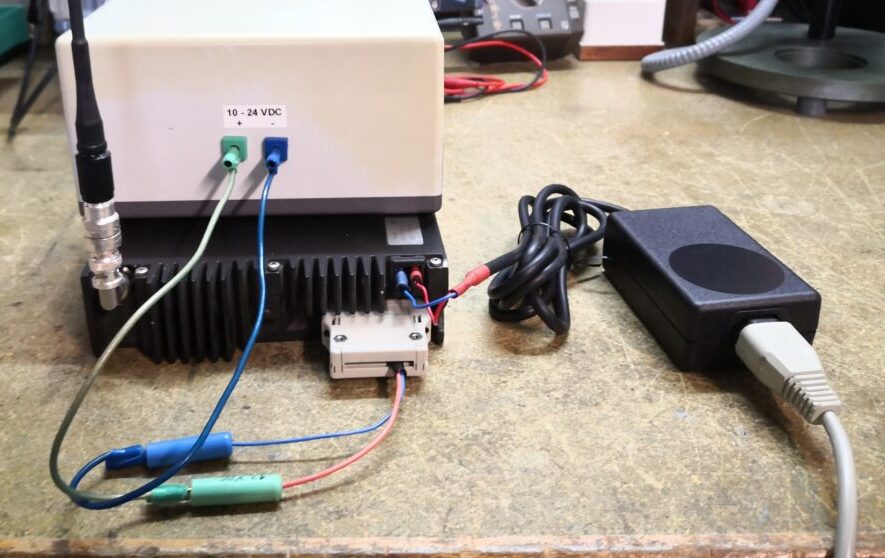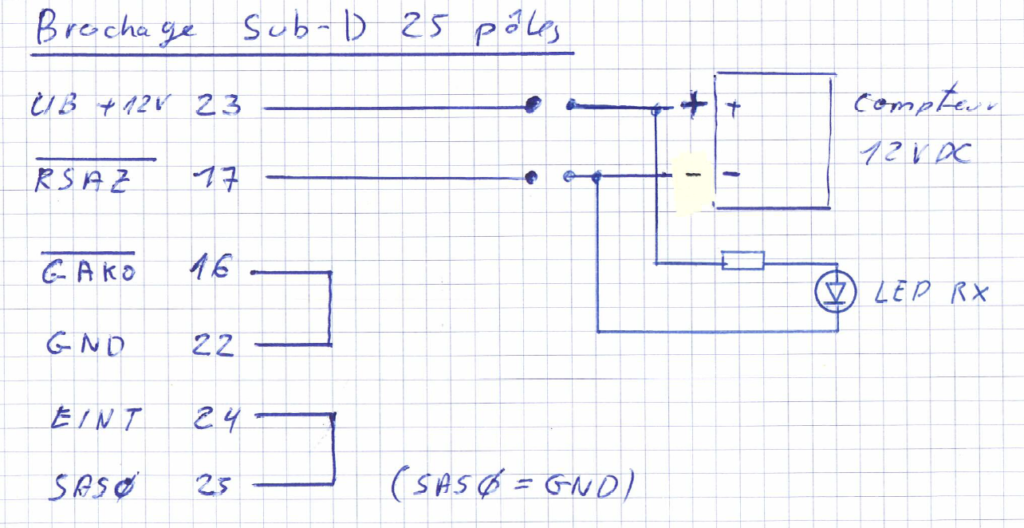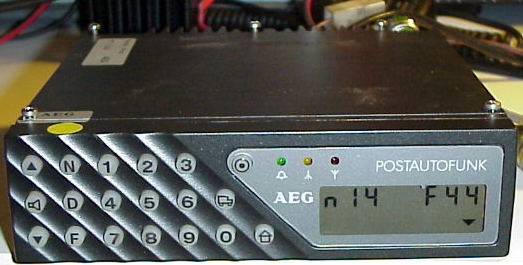
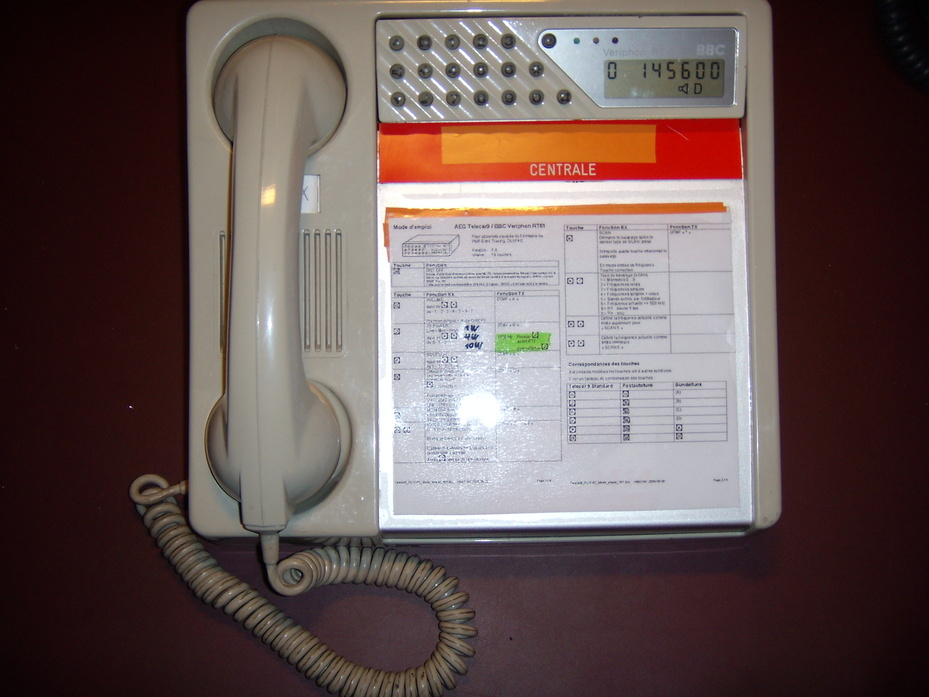
The local ham radio clubs HB9MM and HB9WW had the opportunity to get many of these tranceivers. We had access to 4 different versions:
 | |
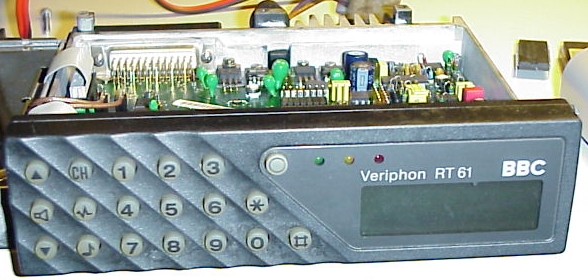 | 70cm with frontpanel |
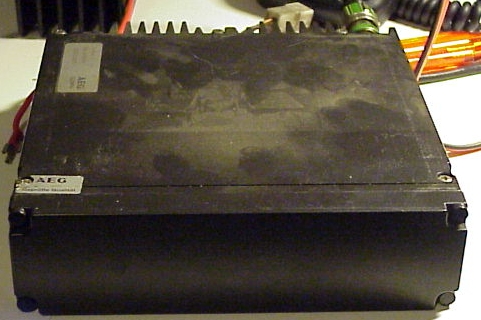 | 70cm without frontpanel |
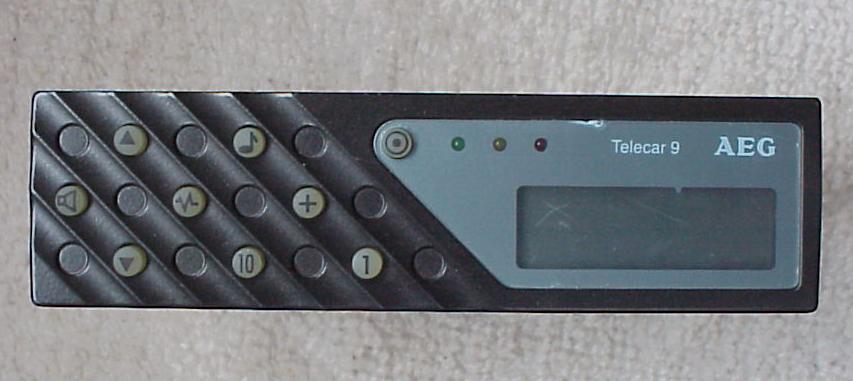 | 2m with reduced frontpanel |
Modifications for amateur radio use (summary)
The original firmware is usable on the amateur radio bands, but is not very convenient to use. Wulf-Gerd, DL1FAC has developped a new firmware that is much more « ham-friendly ». It is open source. With this firmware you can change the frequency as you like, change the power, set the squelch,… I highly recommand to update to this customized firmware. See below to get your own copy. You need to erase the EPROM with an UV eraser and burn it again with Wulf-Gerd’s binary, using a suitable EPROM programmer.
Of course the original radio firmware is also usable if you really want to use it or if you don’t have access to an EPROM programmer. You can programm it through the user interface, but it’s very long and painful. Best is to use a simple MAX-232 level converter and a slow enough PC (pentium with win98 is OK) to run the the programming software developped by PE2HVL.
Alternatively the software provided by triple1.nl runs on a contemporary computer using the same MAX232 interface
On the hardware side if you have got a 2 meters version, you don’t need to change anything. If you have a 70cm version, you need to add about 10 pF in parallel to each VCO (TX and RX) and adjust the whole RX chain. Use of an RF generator, or a transceiver testset helps a lot.
Firmware variants
The firmware is contained in the EPROM chip (27C128 or 27C256) inside the radio. There are several variants.
DL1FAC’s firmware (recommended)
Installation procedure
If you have access to an EPROM programmer I highly recommend to use DL1FAC’s firmware.
- Get Wulf-Gerd DL1FAC’s firmware corresponding to your radio version. See the table below for the different firmware corresponding to your radio versions (see table below)
- Remove the EPROM inside the transceiver.
- Burn a 27C128 with DL1FAC’s firmware. If you don’t have a 27C128 but a 27C256, use the dos command « copy /b file1.bin+file1.bin file2.bin » to get a double sized EPROM file. The files are in raw binary format
- Insert the newly burnt EPROM in the socket
- You might have a small problem if the content of the EEPROM is random. It probably contains the settings of the previous firmware such as channels, CTCSS, tones squelch,… Therefore it’s good practice to erase the EEPROM chip as well. This is the XLS2816 chips located juste beside the EPROM. Put FFs in the whole memory.
- Enjoy the nice firmware. Although it’s pretty user friendly, there are some option that are not fully obvious. HB9ONO has written 2 documents to document them:
User manuals to download (french but anyways useful)
Fimwares versions (binary files for EPROM)
| Radio version | 4m | 2m | 70cm |
| Normal | tc4m-V15.bin | tc2m-V15.bin | tc70cm-V15.bin |
| Trunking | Not available | tc2mB-V15.bin | tc70cmB-V15.bin |
Notes
- Please check for the latest version of the firmware on sourceforge.net/projects/tc9/
- The trunking version of the radio (Bündelfunk in german) needs a different clock frequency of the CPU (8.4672MHz instead of 4.2336MHz) therefore to avoid modifications on the circuit, there is the Trunking firmware version
- The software can be contained in an 27C128 EPROM. This chip might be quite hard to find, and some versions of the radio have been shipped with 27C256 EPROM. In this case you have to double the size of the binary file before burning it into the EPROM. To do this in an easy way, the following DOS command can help you: « copy /b file1.bin+file1.bin file2.bin »
- Note that these firmwares are only to be used for amateur radio purposes, not for professional use. By the way the TX frequency range is limited to the amateur radio band (144-146 or 430-440 MHz)
Original firmware – Programming software from PE2HVL
If you don’t have access to an EPROM programmer, then you have to use the original firmware, although it’s less convenient than DL1FAC’s one.
- Build a small RS-232 level converter (see section Programming Interface below)
- Download the programming software from triple 1 (see section Telecar 9 on the web below). This is probably the best solution, as the software runs also on recent PCs.
- Another option is the programming software from PE2HVL (see section Telecar 9 on the web below). Unfortunately it does require a slow PC (win 98)
- With this software you need also the password of the radio. If you don’t know it, it can be found in the EEPROM at adress 0xB4 to 0xB7. But you need an external EEPROM reader to get this information.
- HB9ONO, Jean François, found and documented that the squelch settings are not organised in a logical way in PE2HVL’s software:
Original firmware – Programming software from PA0JMY
I have not checked this possibility by myself. But it is claimed to work, and with a contemporary PC. Here some comments from PA0CDR who checked this software and was happy.
Hardware
For the 2m version there are normally no hardware modification to do, once you’ve the right firmware programmed with the right settings.
For the 70 cm version of the radio, it’s slightly more complicated.
- You need to add about 10 [pF] capacitor on each VCO (TX and RX), to have the PLL lock.
- Adjust the RX helical filters to have the best sensitivity, and you’re on the air!
A detailed step by step description (in french) of the hardware modification exist as PDF file.
Have a check at the frequency deviation in any case, before going on the air!
If your radio has no front panel (french)
HB9ONO has documented a way to use the radio as a mono-channel transceiver, using the original software. Of course volume setting will be fixed. But for a digipeater or remote control application this is still very sufficient. A description in french is available.
Solved issues
No audio
If your have no audio on the loudpseaker (or no RX audio but beeps are audible)
- If your rig is equipped with a CTCSS module (Mopil), remove it and bridge pins 3 and 4 using a common PC jumper on the ST652 connector (Tnx Giorgio IW4ANU for the tip)
- In some sets, a pin on one of the integrated circuit was cut near the IC case. This was probably needed for some special customization of the radio. Look carefully for any broken pin on the DIL circuits and re-solder it.
- Try to short pin 16 In the MIC connector DB-25 (GAKO signal), to GND (pin22). Or alternately ….remove the bridge. Some firmeare need it, some not.
- Reduce the squelch threshold!
Weird behaviour of the interface
- Erase EEPROM. When switching from a firmware to the other, the remaining memory content might create some strange behaviour.
Interesting documents and links
Schematics and original documentation
I have scanned some papers, coming out from the service manual:
Schematics
Layout of the circuits
Microphone
HB9ONO has modified the microphone of the Clarion JC-10 934MHz CitizenBand radio for Telecar usage:
Original Firmware reverse engineering
The firmware of the 70cm version without front panel has been analysed by Martial. Below the 8031 code laying in the EPROM (binary), as well as the EEPROM content.
Programming interface
DC5WW has designed an interface and published it in CQDL 04/2002. The DARC kindly accepted me to place a scan of the article on my website. Thanks to them for their ham spirit! This interface can be used with the original firmware of the radio and both softwares from PE2HVL and triple1 on the PC side.
Telecar 9 on the web
- tc9 project on sourceforge.net
- PE2HVL Programming software
- Triple 1 Another (better) programming software and firmware. Requires licensing, but free for amateur radio usage
- DC5WW provides lots of informations
- Another useful link from a german OM
- HB9TUH did quite some work on analyzing this transceiver, but unfortunately his site is not responding anymore…
- DL1FAC Wulf-Gerd which has re-written the firmware is available by mail (tc9∂dl1fac.de) . He has very limited time to work on the project, so try to find the solution by yourself before asking!
Comments
I had a lot of fun to « play » with this radio. There was help from many people among them DL1FAC, HB9ONO, DG6EK, HB9HLI, PA0JMY, HB9TLN, HB9TUH, and others who provided softwares, schematics, documentation, components,… and most important part of there free time to help this project move forward. We could convert I estimate more than 20 rigs to amateur usage, and all this for almost no money. To me this is a living demonstration of ham spirit. Thanks to everybody
By the way, if you have experience with this radio (good or bad) feel free to contact me. It’s always interesting to see other playing with the same toys, and if you have any information to share, I’d be glad to add it on this web page.
Application example
Jean-François, HB9ONO built a device that counts the number of hours a local repeater is used. He simply used the RSAZ signal on the DB-25 connector. This signal indicates when a signal is beeing received and is simply used as input for an hour counter.
Nice and clean setup!
